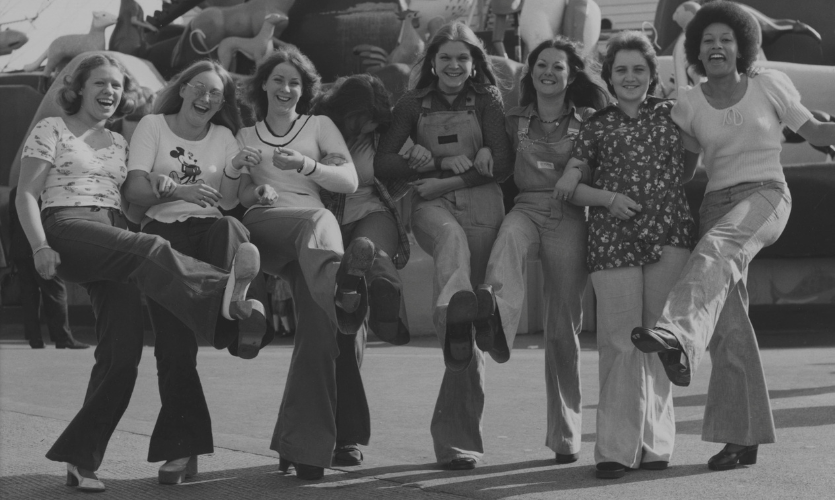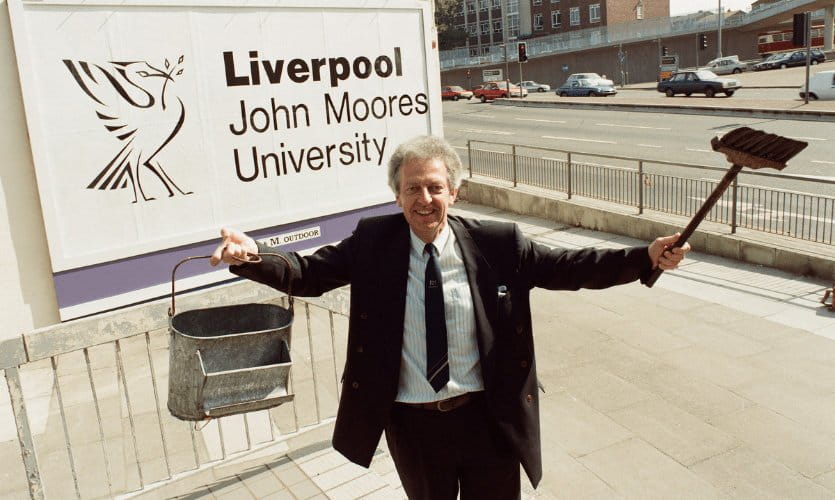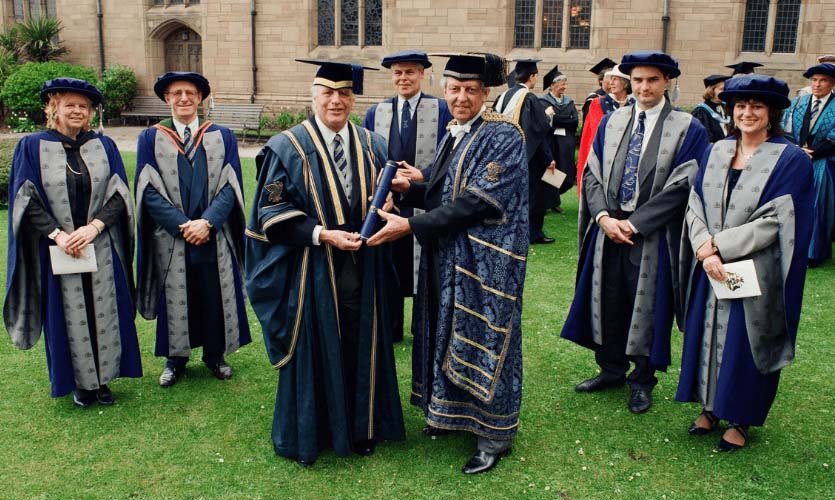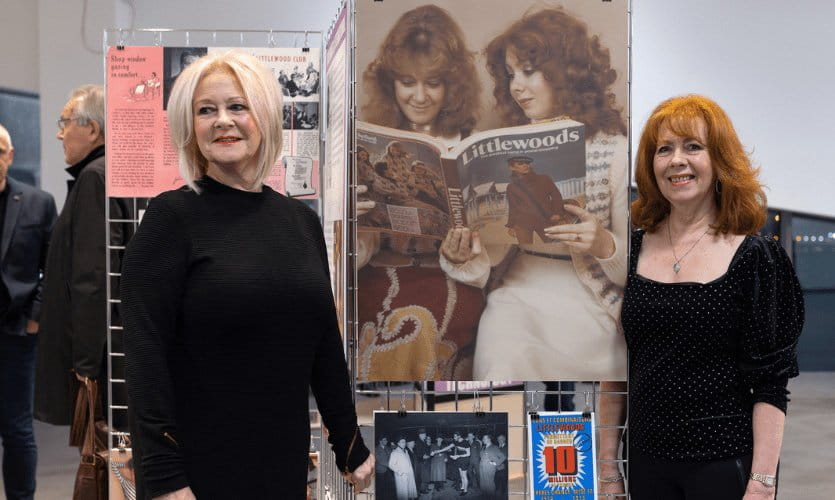The legacy of Sir John Moores
In early 2024, Vice-Chancellor and Chief Executive Professor Mark Power looked back at the legacy of Sir John Moores and his Littlewoods business, revisiting how the university came to bear his name and how the university is the custodian of the Moores’ family story.
Liverpool, Littlewoods and the legacy of Sir John Moores through LJMU
Liverpool John Moores University. That is the name we adopted in 1992 when the Liverpool Polytechnic gained university status. A name chosen in honour of Liverpool businessman and philanthropist Sir John Moores.
We’re the only university in the UK to be named, at the time, after a living person. He was someone who embodied and upheld values that any higher education institution would be proud to instil within their students. Honesty, integrity, equality, opportunity, and plain and simple hard work.

So, who was Sir John Moores? Why is our university named after him? And what is the relevance today?
Sir John Moores’ story could be described as a rags to riches one. Born in 1896, he was the eldest of eight children. Aged just 12 he got his first paid job doing a milk round to support the household. Determined to better himself, he trained to become a telegraphist and joined the Commercial Cable Company before volunteering for the Navy and spending a couple of years in Aberdeen as a wireless operator during the First World War.
He came back to Liverpool in 1919, returning to his role as a telegraphist, and it was around this time that he really started to follow his entrepreneurial instincts, enlisting the help of his siblings to set up Littlewoods. Together with his brother Cecil, their Football Pools were launched in 1923. Over the years their endeavours evolved into mail order catalogues and retail stores, with Littlewoods becoming a household name and a national institution.
At its peak Littlewoods employed 30,000 people, with staff affectionately known as the ‘Littlewoodies’. The Moores brothers were ahead of their time employing a workforce of mainly women, advocating for equal opportunities, and they were renowned for looking after their employees. Not only did they pay the best wage in Liverpool, but ‘Littlewoodies’ were also treated to day trips and given the chance to join in-house sports teams, choirs and amateur dramatic groups.

During the Second World War, Littlewoods buildings were commandeered to make barrage balloons and Halifax bombers as its output was repurposed for the wartime effort. In the post-war years, with the rise of automation, they were one of the first companies in the UK to introduce IBM computers.
In the ‘60s Sir John began to step back from the business, handing over the reins at Littlewoods to Cecil so that he could take on a role at Everton Football Club – football is after all more than just a sport to the people of Liverpool and Sir John was no different. As an Everton fan myself, it’s a relief that our university’s namesake was a blue and not a red!
While both Moores brothers grew older and moved away from their roles at Littlewoods, their ethos remained. By the ‘80s Littlewoods had its own pioneering equal opportunities training scheme, allowing local youngsters like care-experienced Malik Al Nasir, a Black author, poet and now academic, to go to college one day a week alongside work. This led him to eventually study at LJMU, becoming one of our most inspirational alumni and a recent speaker for our Roscoe Lecture Series.

Cecil Moores died in 1989 and Sir John Moores in 1993, but not before we could pay tribute to his remarkable impact on the city of Liverpool by recognising him as the first Honorary Fellow of the Liverpool Polytechnic and then by naming this university in his honour. Now I wasn’t the Vice-Chancellor at the time our new university name was chosen, I was working in our School of Art. But Professor Peter Toyne, our founding Vice-Chancellor, described the decision as being ‘in the spirit of optimism’ and that Sir John Moores was an excellent role model for our students, not just for his determination to become a highly successful and respected entrepreneur but also for his generous philanthropy, supporting many deserving causes locally and nationally during his lifetime through his charitable foundation.
We were also lucky to have Sir John’s eldest son, John Moores Jr, act as an ambassador for our university when we were still in our infancy. He served as our second Chancellor from 1994 to 1999 having previously served as the first Pro-Chancellor and Chairman of the Board of Governors from 1992 onwards. Sir John’s eldest daughter, Lady Grantchester, was admitted as an Honorary Fellow of the university in 2015.

I’m particularly proud to be a trustee of the John Moores Painting Prize, another amazing legacy of Sir John, first held in 1957 and now one of the most prestigious and valuable art prizes in the UK. Our School of Art and Design also plays host to the John Moores Painting Prize China which has been running biennially since 2010, forging a partnership between artists at Shanghai University and LJMU.
As we look beyond our Bicentenary year, Liverpool John Moores University is a lasting memorial to an individual who did so much to build a successful business from humble origins, and who encouraged others to strive for excellence.
It is fitting then that in 2024 we are able to celebrate and act as the rightful custodians of the Littlewoods legacy.
Through five years of impassioned research, Dr Ruth Doughty from our Screen School is ensuring that the story of the Moores family and their ‘Littlewoodies’ is recorded forever more. The Littlewoods Heritage Project is the result of years of dedicated cataloguing, curating and conversation with the people that worked for and were associated with Littlewoods.

A display of vintage photographs and archive materials including pools coupons, promotional artwork and letters, uncovered as part of the project and which have not been available to the public for almost a century, have now been seen by thousands of people while on display during spring 2024 at the Museum of Liverpool at the Pier Head. What’s more is that through student internships the archive materials have also been digitised, oral histories have been captured on camera and even brought to life through an animated short film Above all: Inside the Littlewoods dream factory.
Crucially, the display and wider heritage project captures the ethos of belonging that John and Cecil Moores instilled in their workforce. It showcases moving stories of sisterhood and camaraderie, which created friendships that last to this very day.
I was delighted to connect with descendants of the Moores brothers as we showcased the museum display and shared the films at an event at the beginning of February 2024. It’s important for the family, and for us as the institution that bears his name, to do all that we can to ensure that students today, and our students of tomorrow, know and understand about this history and its significance to the people of Liverpool.

The legacy of this family-owned business still resonates with and through LJMU, teaching us the importance of taking risks and innovative thinking, but never losing sight of the significance of community.
Words by Professor Mark Power

